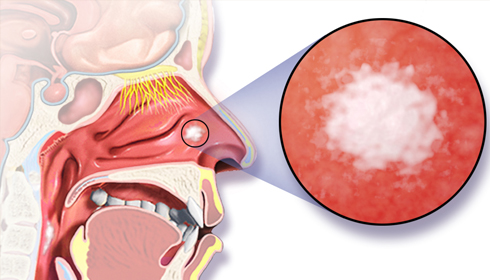
New Research Reveals Shocking Cancer Risk from PM2.5
A recent study has revealed a significant connection between air pollution and increased incidences of head and neck cancers. This finding underscores the critical necessity for reforms in air quality, especially in nations such as India, where pollution levels remain alarmingly high. Scientific Reports recently published a study that highlights the significant health impacts of pollution and underscores the urgent need for measures to mitigate these detrimental effects on public health.
Researchers at Wayne State University, Johns Hopkins University, and Mass General Brigham recently collaborated to produce the study "Air Pollution Exposure and Head and Neck Cancer Incidence." Dr. John Cramer, an associate professor of otolaryngology at Wayne State University, spearheaded research alongside Dr. John Peleman, revealing a significant link between pollutant particulate matter and cancers affecting the upper aerodigestive tract, with a particular focus on head and neck cancer. The link highlights a critical concern regarding exposure to PM2.5, a pollutant prevalent in urban and industrial environments.
Dr. Cramer stated, “Previous research on air pollution has primarily linked its effects to cancers in the lower respiratory system.” He emphasized that, although head and neck cancers occur less frequently than lung cancers, these findings highlight the potential for PM2.5 particles to accumulate in the head and neck area, which may contribute to cancer development. “Numerous instances have been observed where carcinogens interact with or accumulate in the body, potentially leading to cancer,” Cramer emphasised, highlighting the need for additional research to enhance this knowledge.
Dr. Stella Lee, a leading expert in head and neck cancer at Brigham & Women’s Hospital, emphasized the importance of these findings. “Although extensive research has explored the impact of air pollutants on lung disease, there is a notable lack of studies examining air pollution exposure as a risk factor for upper airway conditions,” she stated. The research team aims to raise awareness and prompt environmental and health authorities to recognize air quality as a critical public health issue.
Researchers conducted an analysis utilizing data from the U.S. Surveillance Epidemiology and End Results (SEER) Cancer Database, covering the years 2002–2012, to evaluate the impact of PM2.5 on the risk of head and neck cancer. A recent study revealed a significant link between exposure to PM2.5 and the incidence of head and neck cancer, particularly after a five-year duration. The discovery raises significant concerns due to the minute size of PM2.5 particles, which are capable of evading the body's natural filtration systems, including the nose and throat, allowing them to infiltrate deeper into vulnerable tissues.
In India, the pervasive pollution stemming from industrial emissions, vehicular exhaust, and construction activities poses significant health risks. Applying these findings to the broader population could have severe implications. In India, urban areas are facing a critical challenge as PM2.5 levels consistently surpass recommended limits, heightening the risks associated with respiratory issues and emerging concerns over head and neck cancers. Dr. Amanda Dilger from Massachusetts Eye and Ear, a co-author of the study, underscored the significant global ramifications of the findings: “Our study highlights the need to improve air quality standards to decrease the risk of developing cancer, including head and neck cancer.”
With air pollution on the rise, this study highlights an urgent need for countries around the globe, especially those facing severe pollution challenges, to adopt rigorous air quality regulations aimed at safeguarding public health.